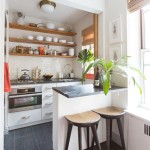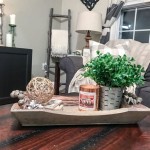How To Decorate Your House With Plants: A Comprehensive Guide
Incorporating plants into home decor elevates aesthetics and contributes to a healthier living environment. The integration of greenery can soften harsh architectural lines, introduce vibrant color palettes, and even improve indoor air quality. This article outlines key considerations and practical strategies for effectively decorating a house with plants.
Assess Environmental Conditions for Optimal Plant Health
Before acquiring any plants, a thorough assessment of the home's environmental conditions is crucial. Light levels, humidity, and temperature variations significantly influence plant health and survival. Identifying the direction and intensity of sunlight entering different rooms is paramount. South-facing windows generally provide the brightest light, while north-facing windows offer the least. East and west-facing windows provide moderate light levels. These variations dictate the types of plants that will thrive in each location.
Measure the humidity levels, particularly in bathrooms and kitchens, where moisture tends to be higher. Consider using a hygrometer for accurate readings. Low humidity can be problematic for certain tropical plants, requiring interventions such as humidifiers or grouping plants together to create a microclimate. Temperature fluctuations are also important. Avoid placing plants near drafts from windows or heating/cooling vents, as these can cause stress.
After understanding the environmental conditions, select plants accordingly. For bright, sunny areas, consider succulents, cacti, or Mediterranean herbs like rosemary and lavender. For low-light areas, opt for snake plants, ZZ plants, or peace lilies. High-humidity environments are suitable for ferns, orchids, and air plants. Matching plants to their ideal environmental conditions increases their chances of survival and reduces maintenance requirements.
Strategic Plant Placement and Container Selection
The placement of plants should be deliberate and thoughtfully integrated into the existing decor. Consider the size, shape, and growth habit of the plant when deciding where to position it. Tall, upright plants can fill vertical space and draw the eye upwards, making a room feel larger. Trailing plants, such as pothos or ivy, can cascade from shelves or hanging baskets, adding a touch of whimsy and softness. Smaller plants can be grouped together to create visually appealing clusters or used as accents on tables and desks.
Containers play a significant role in both aesthetics and plant health. Choose pots that complement the overall style of the room. For a modern aesthetic, consider minimalist ceramic or concrete pots. For a more rustic or bohemian style, terra cotta or woven baskets might be more appropriate. Ensure that the pots have drainage holes to prevent waterlogging, which can lead to root rot. If using a decorative pot without drainage, place the plant in a plastic pot with drainage holes and then insert it into the decorative pot.
Consider the size of the pot in relation to the plant's size and anticipated growth. Repot plants as they outgrow their containers to provide ample space for root development. When grouping plants together, select a variety of heights, textures, and colors to create visual interest. Avoid overcrowding the plants, as this can hinder air circulation and increase the risk of pests and diseases.
Think about creating focal points with plants. A large statement plant, such as a fiddle-leaf fig or monstera, can become the centerpiece of a room. Alternatively, a collection of smaller plants arranged on a bookshelf or windowsill can create a vibrant and eye-catching display. Using plant stands or pedestals can elevate plants and add visual dimension. Consider using plants to frame windows or doorways, creating a natural and inviting transition between spaces.
Incorporate Plants into Different Rooms of the House
Each room in the house presents unique opportunities for incorporating plants into the decor. The living room, being a high-traffic area, benefits from plants that are visually appealing and relatively low-maintenance. Larger plants can anchor corners or fill empty spaces, while smaller plants can be used as accents on coffee tables, shelves, or mantels. Trailing plants can soften the edges of bookshelves or entertainment centers. Consider using plants to create a green wall or vertical garden for a dramatic and impactful statement.
The kitchen often presents challenges due to limited counter space and potential for spills and messes. However, herbs can thrive in a kitchen windowsill, providing fresh ingredients for cooking and adding a touch of greenery. Small succulents or air plants can be placed on shelves or countertops without taking up too much space. Hanging baskets can also be used to maximize vertical space. Ensure that plants are placed away from direct heat sources, such as the stove or oven.
Bedrooms should prioritize plants that promote relaxation and improve air quality. Lavender, chamomile, and snake plants are all known for their calming properties. Avoid plants with strong fragrances, as these can be disruptive to sleep. Opt for low-maintenance plants that don't require frequent watering or fertilization. Position plants away from the bed to avoid any potential allergens or pests. Consider using plants to create a sense of privacy by placing them near windows.
Bathrooms, with their high humidity levels, are ideal for ferns, orchids, and air plants. These plants thrive in moist environments and can help purify the air. Place plants on shelves, windowsills, or hanging baskets. Ensure that the bathroom has adequate ventilation to prevent mold growth. Consider using plants to create a spa-like atmosphere.
Entryways and hallways can benefit from plants that are visually striking and able to tolerate lower light levels. Snake plants, ZZ plants, and pothos are all good options. Place plants on tables, consoles, or plant stands. Consider using a large statement plant to create a welcoming and impactful first impression.
Maintenance and Care Considerations
Proper plant care is essential for maintaining their health and appearance. Regular watering, fertilization, and pruning are key to ensuring that plants thrive. The frequency of watering will vary depending on the plant type, the size of the pot, and the environmental conditions. Generally, it is best to allow the soil to dry out slightly between waterings to prevent root rot. Check the soil moisture by inserting a finger into the soil; if it feels dry, it is time to water. Avoid overwatering, as this is a common cause of plant death.
Fertilize plants regularly during the growing season (spring and summer) to provide them with the nutrients they need. Use a balanced liquid fertilizer diluted to half strength. Avoid fertilizing plants during the dormant season (fall and winter), as they don't require as much nutrients. Prune plants regularly to remove dead or damaged leaves and to encourage new growth. Pruning also helps to maintain the plant's shape and size. Regularly inspect plants for pests and diseases. Treat any infestations promptly with appropriate pesticides or organic remedies.
Dust plant leaves regularly to allow them to photosynthesize efficiently. Rotate plants periodically to ensure that all sides receive equal light exposure. Consider using a humidifier to increase humidity levels, particularly during the winter months when indoor air tends to be drier. Repot plants as they outgrow their containers to provide them with fresh soil and more space for root development.
Understanding the specific needs of each plant is crucial for providing optimal care. Research the specific requirements of each plant before acquiring it and adjust care practices accordingly. With proper care and attention, plants can thrive and enhance the beauty of the home for years to come.

10 Ways To Decorate Your Home With Indoor Plants Bulls Real Estate Blog

10 Tips On How To Decorate Your With Plants In Home

Decorating With Houseplants 15 Indoor Plants Decor Ideas Adria

Decorating With Houseplants 15 Indoor Plants Decor Ideas Adria

Elevate Your Space Decorate With Large Indoor Plants

How To Decorate Your Apartment With Houseplants Draper And Kramer Incorporated

Decorate Your Home With Indoor Plants 5 Easy Decor Ideas Lifestyle News Tv

Decorating With Plants How To Incorporate Into Your Home Decor

Tips For Decorating With Houseplants Garden Gate

7 Stylish Ways To Use Indoor Plants In Your Home S Décor








